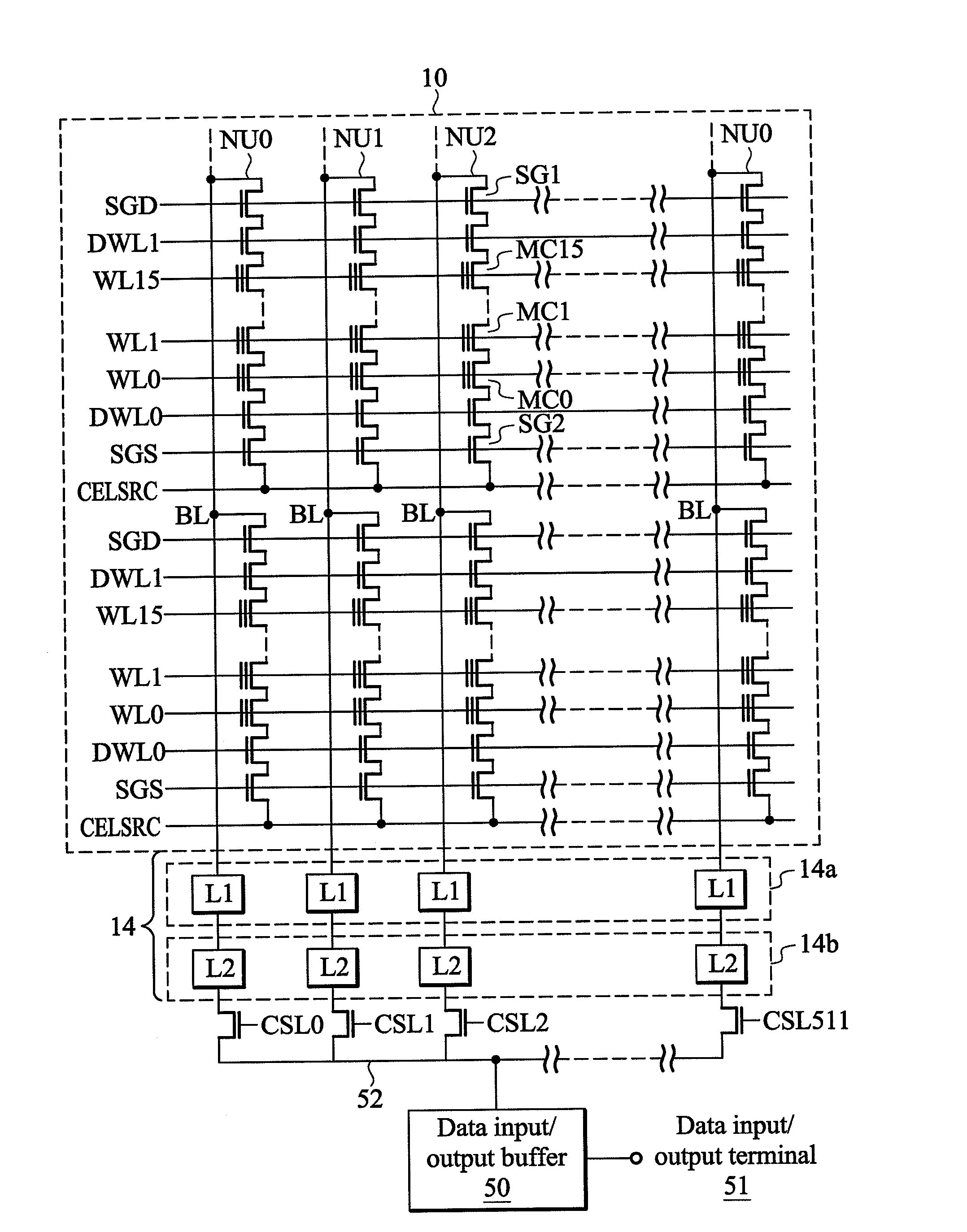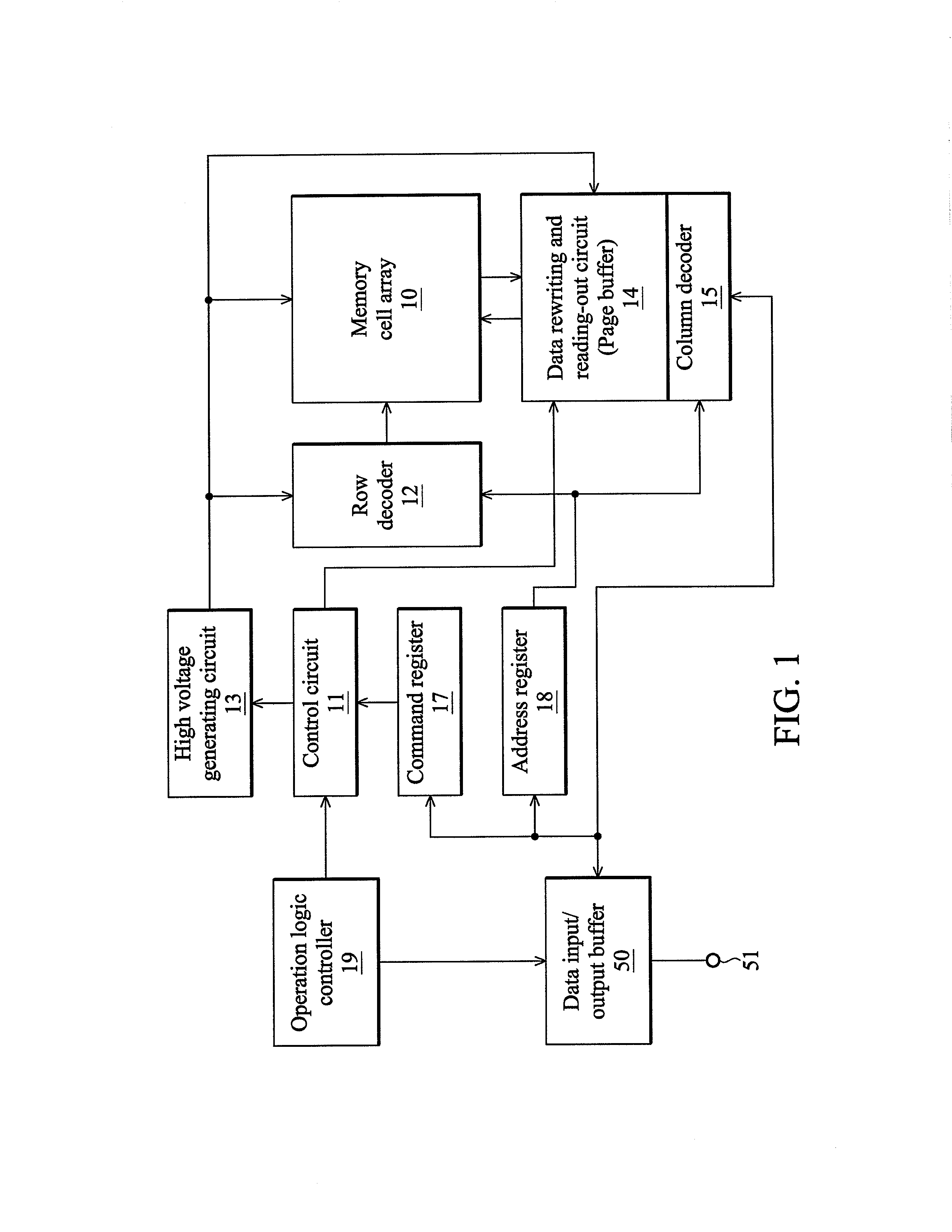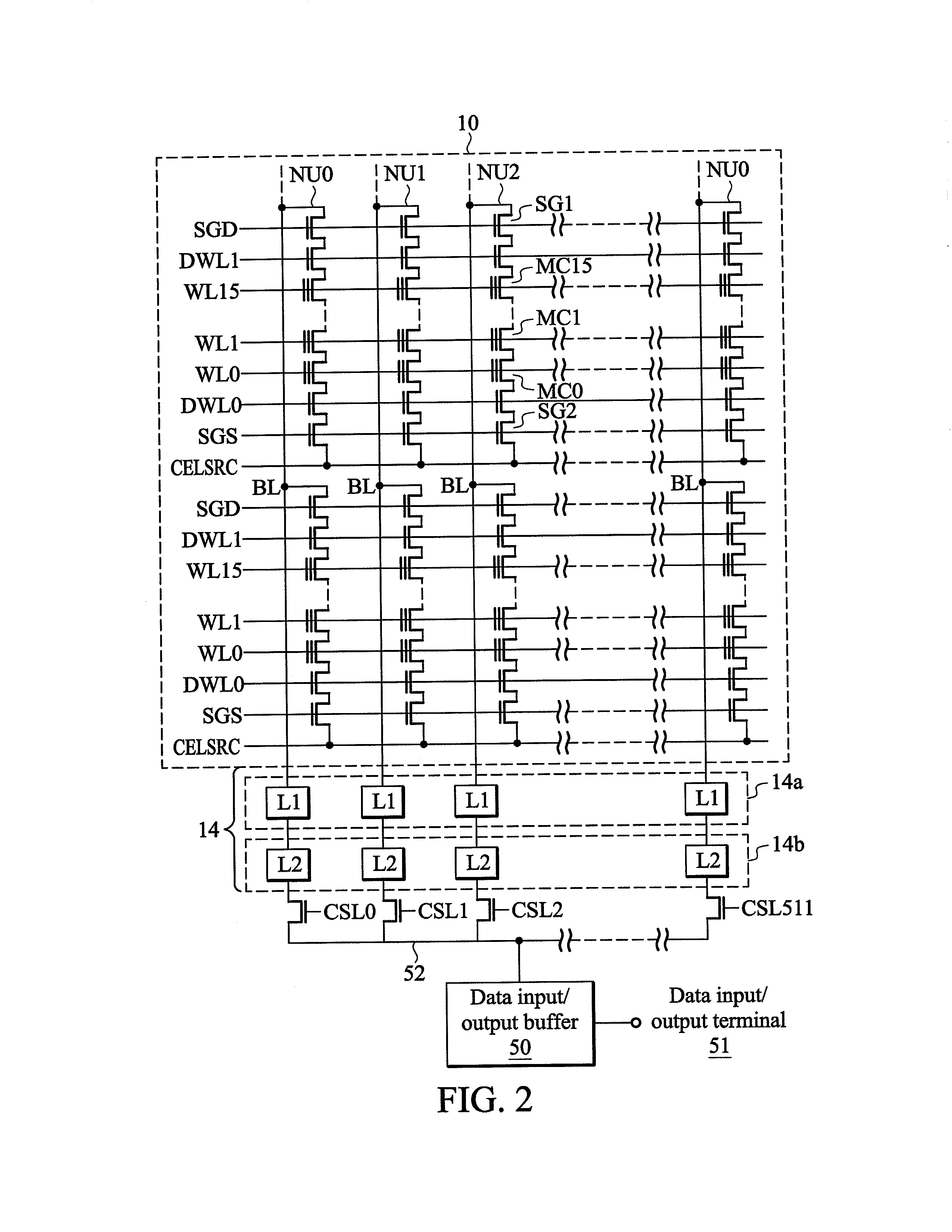Nonvolatile semiconductor memory device and write-in method thereof
a nonvolatile semiconductor and memory device technology, applied in static storage, digital storage, instruments, etc., can solve the problems of shortened programming time, varying programming speed, and widening the threshold voltage distribution, so as to achieve the effect of high-speed rewriting characteristic and reduced threshold voltage distribution
- Summary
- Abstract
- Description
- Claims
- Application Information
AI Technical Summary
Benefits of technology
Problems solved by technology
Method used
Image
Examples
first embodiment
[0084]FIG. 13 is a flowchart showing a programming process according to the invention. In FIG. 13, first, programming data is loaded in step S1. In step S2, data of specific bits of a block selected for write-in is read out before a programming pulse is applied. Vstart of the block or each word line of the block is stored in the data. More specifically, first, as mentioned above, when the data is stored in a dummy word line, the dummy word line is selected and read-out. When the data is stored in normal word lines where additional memory cells are added, after a predetermined reading-out voltage Vsp is applied to all word lines, reading-out is performed once. Then, a programming start voltage and flag data are set to a temporary register (buffer memory) based on data of specific bits corresponding to selected word lines. Next, in step S3, the programming data is set to the buffer memory 14a. Furthermore, in step S4, a programming process using an ISPP method using the programming st...
second embodiment
[0092]FIG. 19 is a flowchart showing an erasing process according to the invention. In FIG. 19, first, an old programming start voltage and flag data are read out from specific bits of memory cells in step S61. Here, a flag denotes a word line for a programming speed checking. Next, the programming speed checking process is performed in step S62. Data is erased by using an erasing pulse in step S63. Then, in step S64, a soft programming process is performed by using a soft programming start voltage based on the programming start voltage set by said programming speed checking or a soft programming start voltage determined by other predetermined ways. Further, in step S65, the programming start voltage and the flag data set as described above are stored in specific bits, and the modified flag denotes a next checking word line for the programming speed checking.
[0093]In the programming speed checking process of FIG. 19, in order to reduce extra time for the programming speed checking p...
PUM
 Login to View More
Login to View More Abstract
Description
Claims
Application Information
 Login to View More
Login to View More - R&D
- Intellectual Property
- Life Sciences
- Materials
- Tech Scout
- Unparalleled Data Quality
- Higher Quality Content
- 60% Fewer Hallucinations
Browse by: Latest US Patents, China's latest patents, Technical Efficacy Thesaurus, Application Domain, Technology Topic, Popular Technical Reports.
© 2025 PatSnap. All rights reserved.Legal|Privacy policy|Modern Slavery Act Transparency Statement|Sitemap|About US| Contact US: help@patsnap.com



